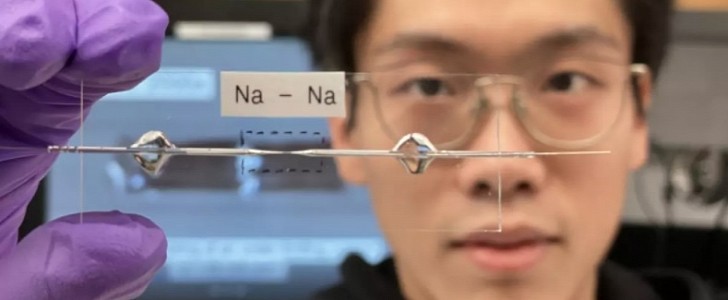There are a lot of devices that run on lithium-ion batteries, from smartphones to electric cars and more. But while this type of rechargeable battery is the most popular one at the moment, things might soon change. A new version of the battery is in development, which can reduce both size and the cost of production.
If you’ve purchased any electronics that come with a rechargeable battery, you are familiar with the “lithium-ion” term. It is the most widely used type, thanks to its energy density and convenience. It is easily portable and has the best energy-to-weight ratio. But that doesn’t mean we can’t do better.
Researchers are constantly working on coming up with an even better one and they might have just succeeded. A team of engineers at the Washington University in St. Louis is experimenting with a stable sodium-ion battery that is cheaper to make, and smaller in size. While we are not being told how advanced the research is, or when we'll get to see some real-life results, experiments look very promising.
Lithium-ion batteries are responsible for a quarter of the total cost of all these devices, according to Peng Bai, the leader of the research, published in Washington University's The Source. But by switching to sodium batteries, production costs are cut because they no longer rely on lithium, which a less common material.
This new type of battery is an anode-free one, as opposed to traditional lithium-ion batteries which consist of a cathode and anode. This translates into a battery that is similar in performance, but takes up less space.
While this may look like a groundbreaking discovery, replacing lithium with sodium is not a new chemistry concept, just an improved one. It has been used before, but no one has managed to obtain a decent lifetime for the anode-free batteries until now.
Peng Bai is an assistant professor in the Department of Energy, Environmental & Chemical Engineering in the McKelvey School of Engineering, at Washington University. His research primarily focuses on developing next-generation batteries.
Researchers are constantly working on coming up with an even better one and they might have just succeeded. A team of engineers at the Washington University in St. Louis is experimenting with a stable sodium-ion battery that is cheaper to make, and smaller in size. While we are not being told how advanced the research is, or when we'll get to see some real-life results, experiments look very promising.
Lithium-ion batteries are responsible for a quarter of the total cost of all these devices, according to Peng Bai, the leader of the research, published in Washington University's The Source. But by switching to sodium batteries, production costs are cut because they no longer rely on lithium, which a less common material.
This new type of battery is an anode-free one, as opposed to traditional lithium-ion batteries which consist of a cathode and anode. This translates into a battery that is similar in performance, but takes up less space.
While this may look like a groundbreaking discovery, replacing lithium with sodium is not a new chemistry concept, just an improved one. It has been used before, but no one has managed to obtain a decent lifetime for the anode-free batteries until now.
Peng Bai is an assistant professor in the Department of Energy, Environmental & Chemical Engineering in the McKelvey School of Engineering, at Washington University. His research primarily focuses on developing next-generation batteries.

